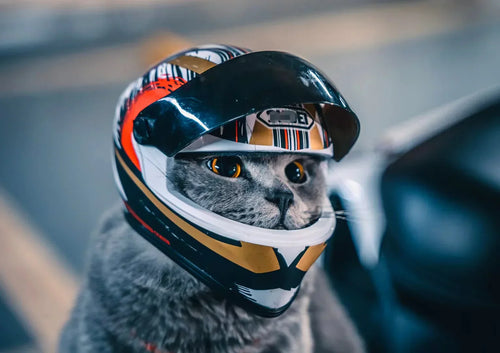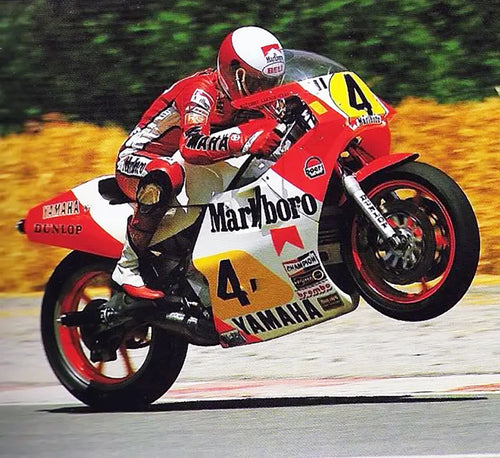
1115 mots | Temps de lecture : 5 minute(s)
KTM in MotoGP: The orange challenge in the premier class
KTM , the iconic Austrian off-road manufacturer, has taken on a bold challenge: to conquer the premier class of motorcycle sport. True to its motto "Ready to Race" , the orange brand has succeeded in imposing its unique style, combining innovation , passion and determination . In less than a decade, KTM has gone from being a novice to a true outsider , capable of shaking up the historic giants. Here is the story of its meteoric rise in MotoGP .
Foundations: from earth to bitumen
Even before thinking about MotoGP , KTM dominated off-road: motocross, enduro, rally-raid - the brand established itself wherever the dust flew. But in 2012, it was in Moto3 that the adventure on tarmac really began. Thanks to an ambitious youth program and a total commitment to Grand Prix, KTM swept the titles with riders like Sandro Cortese , Brad Binder and Pedro Acosta .
Building on this experience and a rise in Moto2 via its Red Bull KTM Ajo subsidiary, the brand announced in 2014 a 100% in-house MotoGP project: engine, chassis, electronics, suspension... nothing would be subcontracted. A rare bold move in an often standardized paddock.
The RC16 project: anti-conformism as DNA
KTM has chosen to ignore conventional formulas and forge its own technical path. From the outset, the RC16 stands out radically:
- 90° V4 engine : powerful architecture, ideal for fast circuits and muscular accelerations.
- Tubular steel frame : a KTM signature, more flexible and different from the aluminum perimeter frame of competitors.
- WP Suspensions : brand integrated into the KTM group, in contrast to the omnipresent Öhlins.
This approach gives the bike a strong identity . While the beginnings are complex, the RC16 is constantly evolving , and KTM quickly establishes itself as a manufacturer to be taken seriously.
MotoGP debut (2016–2017)
In 2016, KTM entered a wild-card RC16 in Valencia, driven by Mika Kallio . In 2017, the team officially signed up with Pol Espargaró and Bradley Smith . The project was young, but the technical commitment was total. Despite the initial limitations, KTM scored its first points, got close to the top 10 and demonstrated a very rapid progression curve.
Rise to power and prestigious recruitment (2018–2019)
In 2018, Pol Espargaró achieved his first top-five finish for the brand. KTM continued to invest heavily, notably with the recruitment of Johann Zarco in 2019. But the Frenchman's aggressive style didn't suit the bike, and the adventure was cut short. Despite this, Pol Espargaró showed great consistency and pushed the RC16 to its limits, taking the team to the next level.
2020: The year of the turning point
The 2020 season, disrupted by the pandemic, is reshuffling the deck... and KTM is taking advantage. At the Brno GP, Brad Binder , a rookie from the Red Bull KTM Ajo program, scored a historic victory . It was KTM 's first in MotoGP , and the first for a South African in the premier class.
Miguel Oliveira , another in-house product, then won in Styria (with a strategic victory in the final bend) and then in Portugal, at home. The result: three victories, a clear message. KTM is no longer a naive outsider , but a serious contender for victory.
Consolidation and global ambitions (2021 – present)
In 2021–2023, KTM continued its development with a solid quartet: Brad Binder , Miguel Oliveira , Jack Miller and the satellite team riders. The KTM style was affirmed: aggressive , unpredictable , explosive . Brad Binder became famous for his spectacular comebacks in the rain or in the last laps.
But it's in 2024 that KTM makes a big splash: the arrival of Pedro Acosta , the 19-year-old Spanish phenomenon and Moto3 and Moto2 champion, changes the situation. KTM is banking on him as a future world champion - and the whole paddock knows it.
The advantages of the RC16
- Explosive V4 engine : big torque and impressive acceleration.
- Responsive technical team : constant developments, aggressive updates during the season.
- Strategy flexibility : KTM adapts its settings according to the riders and the circuits, with more and more flexibility.
A dual structure: factory and satellite
- Red Bull KTM Factory Racing : the official team, at the heart of the development of the RC16.
- GASGAS Factory Racing Tech3 : satellite structure with the full support of KTM , a real springboard for young talents.
A different philosophy
KTM does things differently — and that’s its strength:
- Total independence : engine, chassis, suspensions, electronics… everything is designed in-house, a rarity today in MotoGP .
- Radical competitive spirit: The motto "Ready to Race" is not a marketing slogan, it's a corporate culture.
- Rider training: through the Red Bull Rookies Cup, KTM Ajo in Moto3/Moto2, and the junior program , KTM creates its own champions.
Why is KTM so fascinating in MotoGP?
- A meteoric rise : from rookie to contender in less than 10 years.
- A strong identity : orange, bold, disruptive.
- An atypical bike : the RC16 is not perfect, but it can win anytime, with anyone.
- A promising new generation : Pedro Acosta , Deniz Öncü , Daniel Holgado … there is no shortage of KTM talent.
Conclusion
KTM is today a force to be reckoned with in MotoGP . In less than a decade, the Austrian brand has gone from dirt to the world's biggest podiums. Its bold technical vision , adaptability , and youth development strategy set it apart. KTM 's future is orange, explosive , and ambitious —and the world title has never seemed closer.


